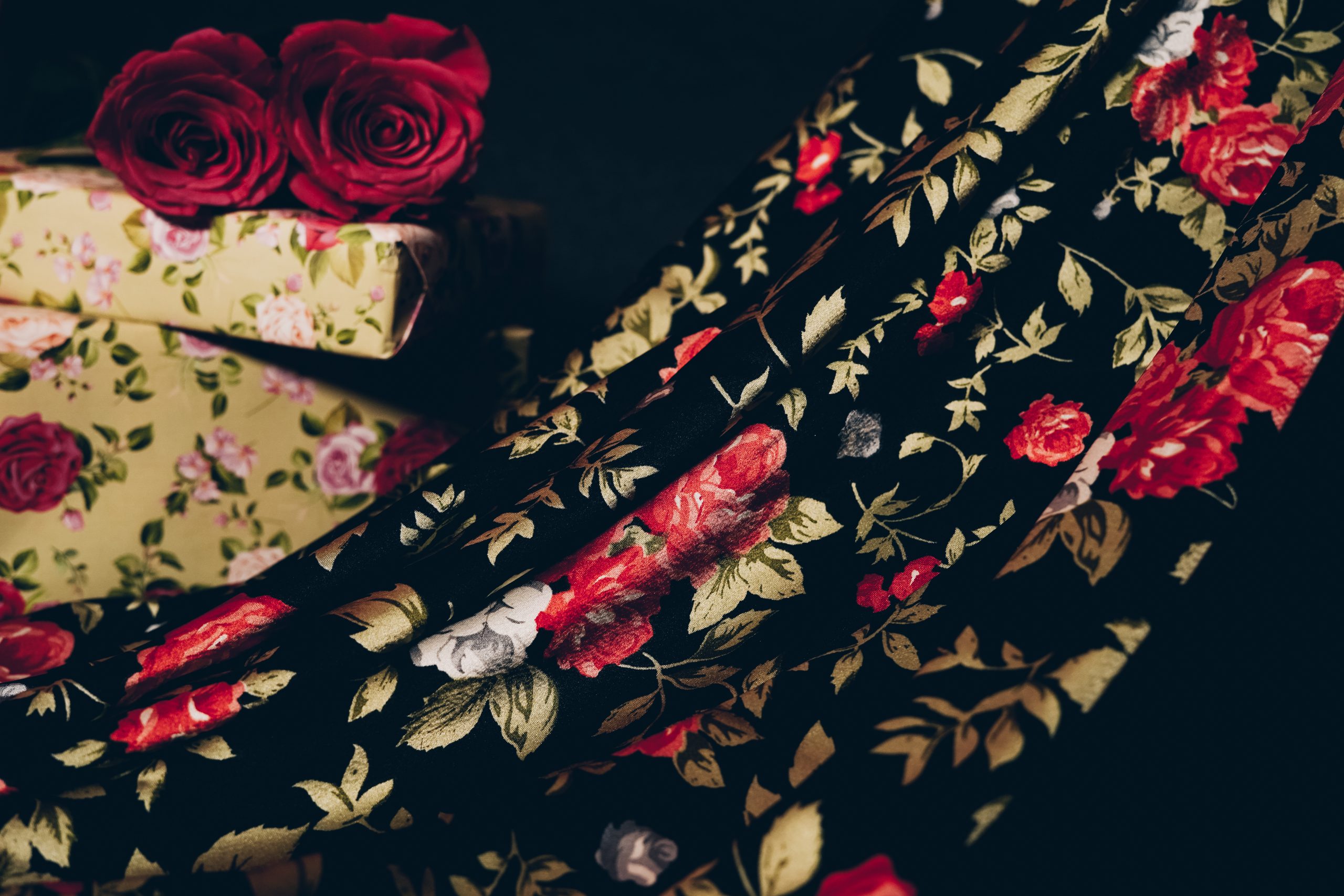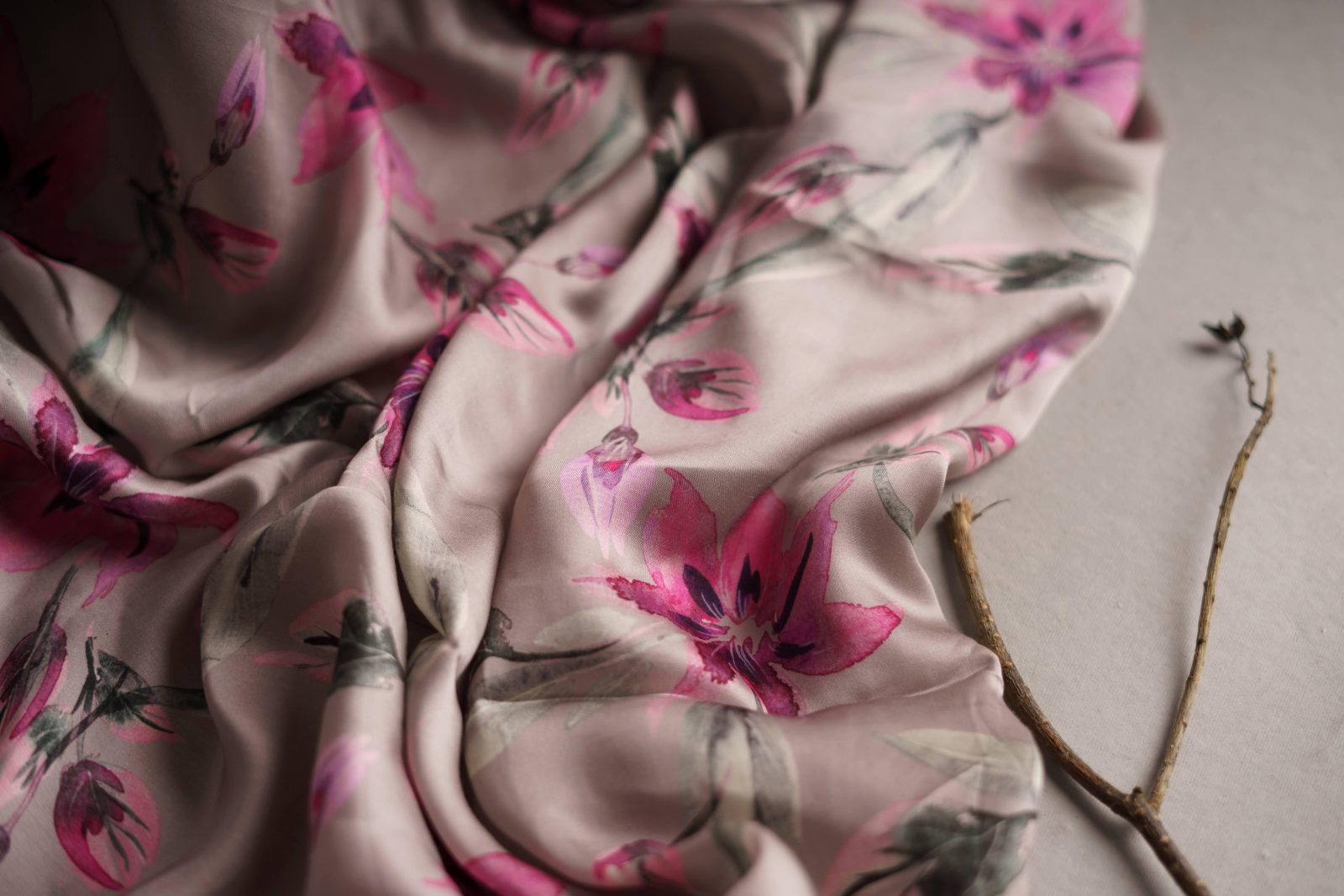Satin isn’t the name of a sort of weave; it’s the fabric’s name. Due to fewer interlaces in the weave Satin Fabric is glossy in nature. There is a lot of demand for alluring and shiny clothes in the fashion sector. This obsession with satin silk dates back to the Middle Ages, and it hasn’t gone away since. Those who could afford it were the ones who took advantage of it the most.
The Different Types of Satin Material and Their Applications
The kind of fiber and satin weave used to manufacture the cloth determines the type of satin material. You have the following options when it comes to satin materials for your project:
A Traditional Satin
Satin Black Shantung is another name for the fabric. To create antique satin, slubbed yarns are used in the weaving process. It’s a drab and lackluster cloth.
If you’re constructing curtains, and other such bedding items, you may use antique satin.
The Baronet’s Stain
Baronet satin is reminiscent of georgette in appearance. The fabric has a silk-like sheen with a Cotton backing. A blend of rayon and cotton threads is employed in the creation of this garment. It’s a luxurious material with a great sheen.
Bedsheets, furniture, fashion, and footwear items may all benefit from Baronet Satin fabric. Using Baronet satin fabric for bespoke gowns is also a great option.
Satin with a Slight Stretch
Stretch satin is a prominent material in the fashion business. Within the fabric, a tiny amount of flexibility comes from elastane, spandex, or Lycra.
If you’re producing lingerie, wedding gowns, or body-hugging outfits, consider using stretch silk satin.

Satin Crepe in Black.
Black crepe satin cloth is an excellent double-sided fabric. It’s flowing and drapey, so it’s a great choice. When it comes to crepe black satin, nothing beats it for both sheen and feel.
Duchess
When it comes to creating personalized wedding couture, lingerie, or evening dresses, we think of duchess satin. The glossy texture of this sophisticated fabric adds a touch of class and refinement to any ensemble. It’s ideal for constructing wedding gowns.
Moreover, the price of duchess satin is high. Consequently, if you want to use it for bespoke dressmaking tasks, such as wedding wear, then you should only purchase it.
Charmeuse
Charmeuse satin fabric provides a gleaming finish. The French term “charmer,” which means “to charm,” is the source of the fabric’s name. Best Charmeuse Satin features a lightweight, body-fitting feel with a gleaming surface on the front.
Satin with two faces
The double-faced satin fabric possesses the sheen of satin cloth on both sides, as its name implies. You may wear it either way since it’s a mid-weight fabric.
Double-faced satin may be used to make ribbons and other embellishments. Making wedding favors along with wrapping presents with it is a cinch!
Satin Slippers
Slipper satin is a synthetic material, not a natural fiber like silk. It has a strong, glossy texture. Making tablecloths and other home accents using slipper satin material is an option.
The final usage determines whether or not to use satin cloth. Choosing the correct cloth for your project is vital to prevent disappointment. It’s also possible to produce satin fabric out of cotton, polyester, as well as acetate fibers. As the fiber changes, so do its texture and luster. Customers may rely on Fabriclore to handle the full manufacturing process for them.
What Is the Appeal of Satin Silk?
The versatility of satin silk allows it to be used in a variety of ways. It’s great for lingerie, upholstery, gowns, as well as ties, to name just a few applications. Additionally, pure silk satin material is hypoallergenic along with it has a luscious feel and touch.
Useful Applications for Satin Cloth
Here are a few instances of how satin is used in the fashion industry:
- Satin is still the most popular fabric for making dresses and gowns because of how it shines and moves.
- The fabric was first used in upholstery, which dates back to the 18th century. E.g., you may use it to cover cushions and pillows as well as sofas.
- Satin is the fabric of choice for many ballerina shoe designers.
- The use of satin silk in the fabrication of a variety of accessories, such as tote bags, wallets, and handbags, is possible.
How to Take Care of Satin Clothes
- The delicate nature of satin fabric requires special handling and maintenance. Besides, washing silk sateen by hand or in a washing machine is never a good idea.
- Furthermore, another rule of thumb is to wash satin clothes by hand only.
- Satin has a tendency to lose its elasticity.
- Never wring or hang a satin cloth to dry. Laying it out on a clean surface and above all allowing it to dry naturally is one option.
In an effort to enhance the elegance of the satin fabric collection, Fabriclore has introduced pleated satin. When folded in half, the cloth looks nicer because of the pleating.
Pleated satin’s 3D-like texture makes it an excellent material for adding glitz to your outfits. Above all, it is a versatile fabric that can be used to make a wide range of outfits.












Leave a Reply